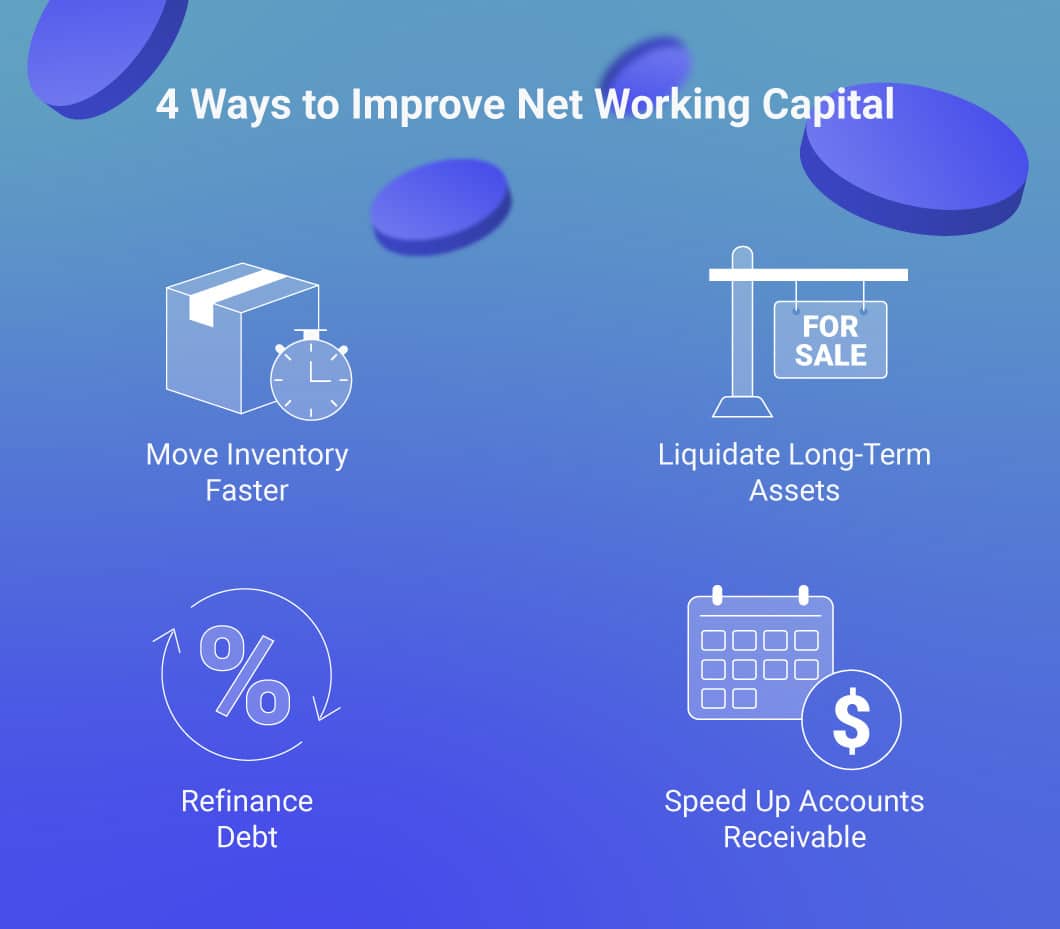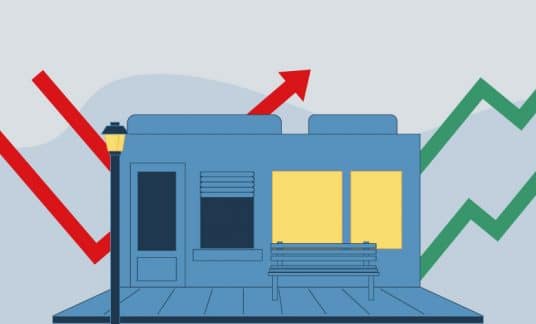Regularly reviewing the health of your company is essential. To that end, you should have a solid grasp of the working capital calculation. It’s not difficult. You simply subtract your current liabilities from your current assets to find your net working capital.
Once you master how to calculate working capital, you can instill changes that will benefit your company in the long run.
Let’s walk through what working capital is, the working capital formula, examples and tips to improve yours.
What Is Working Capital?
Working capital is the amount of money a company has available to pay for day-to-day functions and short-term debts. Surprisingly, 65% of companies surveyed indicated their greatest challenge was paying their operating expenses, according to the Federal Reserve Banks’ Small Business Credit Survey. However, working capital is an essential part of financial modeling.
-
Net Working Capital or Working Capital?
You may hear both the terms net working capital and working capital when discussing business finances. While they sound slightly different, you can use them interchangeably.
Components of Working Capital
When you’re wondering how to find working capital, consider that the formula takes into account assets and liabilities, information you can find on your company’s balance sheet.
Typical assets include cash, accounts receivable, inventory, prepaid expenses and marketable securities. These are things that can be converted into cash within a year or less, both tangible and intangible.
Liabilities, on the other hand, are short-term financial obligations that the company must pay within a year or less. Examples of liabilities include accounts payable, taxes, lines of credit, sales taxes owed, short-term loans, the current portion of long-term debt and customer deposits.
As a business owner, you should strive to have a positive net working capital balance with more current assets than current liabilities.

How to Calculate Working Capital
When you’re learning how to calculate working capital correctly, remember you’re calculating the dollar amount remaining after current liabilities have been subtracted from current assets.
The following is the net working capital formula:
Net Working Capital = (Current Assets) – (Current Liabilities)
There is a second formula that can be used to find net working capital:
Net Working Capital = [(Cash and Cash Equivalents) + (Marketable Investments) + (Trade Accounts Receivable) + (Inventory)] – (Trade Accounts Payable)
As you can see, the second formula looks specifically at accounts receivable and inventory to provide a fuller picture of a company’s fitness.
-
Operating Working Capital Formula
Operating working capital differs from net working capital in that it measures a business’s assets and liabilities over the long term.
The formula to calculate this is as follows:
Operating Working Capital = (Assets – Cash and Securities) – (Liabilities – Non-Interest Liabilities)
Net Working Capital Example
Let’s look at a working capital example for a retail store we’ll call ABC Enterprise. ABC Enterprise’s assets and liabilities are as follows:
| Current Assets | Current Liabilities |
| Cash: $20,000 | Accounts Payable: $20,000 |
| Inventory: $10,000 | Debt: $10,000 |
| Accounts Receivable: $10,000 | |
| Total: $40,000 | Total: $30,000 |
The company’s current assets are $40,000, and the current liabilities are $30,000. When we’re looking for how to find working capital, we’d subtract current liabilities from current assets to get a net working capital of $10,000, meaning this company has positive net working capital.
Apply for a working capital loan.
Net Working Capital Ratio
Net working capital ratio is an alternative to the working capital calculation to compare assets and liabilities. This ratio gives an idea as to whether or not a company has short-term assets to cover short-term debt.
Finding your company’s net working capital ratio is simple. You divide the numbers instead of subtracting them to get a ratio. The formula is as follows:
Working Capital Ratio Formula = (Current Assets) / (Current Liabilities)
What Is a Good Working Capital Ratio?
A good working capital ratio is said to be between 1.2 and 2.0.
In our working capital example above, ABC Enterprises would come out with a ratio of 1.3, indicating the business is healthy, having 1.3 times the amount of current assets to liabilities.
If the ratio is higher than 2.0, this signifies that you’re not effectively using current assets to generate revenue. On the other hand, if the ratio is less than 1.0, you may have potential liquidity issues, which can be a red flag.
Keep in mind this ratio might be misleading if a business has lots of inventory. As far as current assets go, it’s not always possible to liquidate inventory in the short term.
Positive vs. Negative Working Capital
When you calculate net working capital, the outcome you want is a positive number. What does it mean to have positive working capital?
It’s an indication your business is in good financial health. Healthy firms can meet current financial responsibilities, and positive working capital indicates an ability to invest in other operational needs.
That said, having positive working capital doesn’t guarantee a company’s success. Having a positive number isn’t great if a company can’t collect on accounts receivable in a reasonable amount of time, which causes a gap in cash flow.
Negative working capital is seen any time the net working capital calculation is a negative number or if the working capital ratio formula produces a number less than 1.
Negative working capital can mean many things:
- You need to find more efficient ways to use short-term assets
- Your company lacks assets to meet current financial obligations
- You’re struggling to maintain or expand sales
Is Negative Working Capital OK for Your Business?
Despite being an indicator of negative company health, a negative number doesn’t mean a company will go bankrupt. Certain companies do well despite negative working capital. Those with high inventory turnovers, such as grocery stores and discount retailers, are good examples of enterprises that can be highly profitable despite negative working capital.
However, it is important to note that negative working capital often causes increased financial pressure, increased borrowing and late payments that result in a lower credit score. This low credit score can mean higher interest rates from banks, which in the long run, can cost businesses more money.
-
How to Calculate Change in Net Working Capital
Once you know how to find net working capital, it can be useful to calculate the change in working capital over time. Doing so will allow you to compare how your business assets are performing from one period to the next — generally in yearlong increments, but you can calculate change quarterly as well.
How do you calculate change in net working capital? The formula is simple:
Change In Net Working Capital = (Current Net Working Capital) – (Previous Net Working Capital)
It’s important to remember that this net working capital calculation doesn’t paint the whole picture. Sometimes businesses strategically decide to increase short-term liabilities for a certain period, which can cause fluctuations.
That said, we do recommend tracking change in net working capital so you can keep an eye on your operating cash flow.
4 Ways to Improve Net Working Capital
Once you know how to find change in net working capital, you might want to try and improve it. The good news is that by making some improvements, net working capital can rise.
Here are 4 tips to help you achieve positive net working capital:
1. Move Inventory Faster
Although inventory is considered an asset in the working capital formula, it’s less liquid. Because cash is tied up in inventory, you can find yourself without funds if you’re storing inventory for long periods. The solution? Move your inventory faster.
You can do this with the following methods:
- Avoid overordering
- Focus on quick-selling inventory
- Re-evaluate stock items that sell slowly
- Return unused inventory to suppliers in exchange for a restocking fee
2. Liquidate Long-Term Assets
Long-term assets have the same problem as inventory — they tie up your cash in things such as equipment and buildings. If you’re not using long-term assets, you might want to sell them to increase your cash flow.
If you have extra office space, sell or rent part of it. The same goes for machinery you no longer use.
However, be careful not to get rid of all your assets, which may be needed for collateral if you’re applying for secured loans.
3. Refinance Debt
Refinancing is a good option for those with a history of on-time payments. Additionally, refinancing can lengthen payment schedules, give you a lower monthly payment and provide you more cash for working capital.
According to Goldman Sachs “Voice of Small Business in America” report, 54% of businesses that sought funding did so to improve working capital.
4. Speed Up Accounts Receivable
Invoices can also tie up money. Reduce the accounts receivable period to improve your working capital, and try to encourage early payment, such as by implementing discounts for quick payment.

Why Is Working Capital Important?
Entrepreneurs should pay close attention to their working capital calculation because it measures a company’s liquidity. It also shows whether a company can meet short-term obligations and if it’s able to invest in activities that will produce income. After all, working capital is an indicator of business efficiency and financial solvency.











